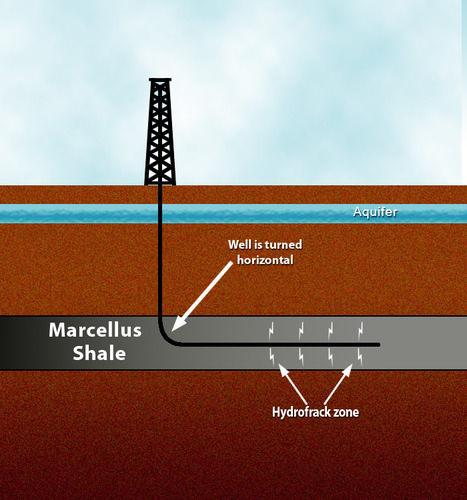20.9: Natural Gas Power
- Page ID
- 6079
\( \newcommand{\vecs}[1]{\overset { \scriptstyle \rightharpoonup} {\mathbf{#1}} } \)
\( \newcommand{\vecd}[1]{\overset{-\!-\!\rightharpoonup}{\vphantom{a}\smash {#1}}} \)
\( \newcommand{\dsum}{\displaystyle\sum\limits} \)
\( \newcommand{\dint}{\displaystyle\int\limits} \)
\( \newcommand{\dlim}{\displaystyle\lim\limits} \)
\( \newcommand{\id}{\mathrm{id}}\) \( \newcommand{\Span}{\mathrm{span}}\)
( \newcommand{\kernel}{\mathrm{null}\,}\) \( \newcommand{\range}{\mathrm{range}\,}\)
\( \newcommand{\RealPart}{\mathrm{Re}}\) \( \newcommand{\ImaginaryPart}{\mathrm{Im}}\)
\( \newcommand{\Argument}{\mathrm{Arg}}\) \( \newcommand{\norm}[1]{\| #1 \|}\)
\( \newcommand{\inner}[2]{\langle #1, #2 \rangle}\)
\( \newcommand{\Span}{\mathrm{span}}\)
\( \newcommand{\id}{\mathrm{id}}\)
\( \newcommand{\Span}{\mathrm{span}}\)
\( \newcommand{\kernel}{\mathrm{null}\,}\)
\( \newcommand{\range}{\mathrm{range}\,}\)
\( \newcommand{\RealPart}{\mathrm{Re}}\)
\( \newcommand{\ImaginaryPart}{\mathrm{Im}}\)
\( \newcommand{\Argument}{\mathrm{Arg}}\)
\( \newcommand{\norm}[1]{\| #1 \|}\)
\( \newcommand{\inner}[2]{\langle #1, #2 \rangle}\)
\( \newcommand{\Span}{\mathrm{span}}\) \( \newcommand{\AA}{\unicode[.8,0]{x212B}}\)
\( \newcommand{\vectorA}[1]{\vec{#1}} % arrow\)
\( \newcommand{\vectorAt}[1]{\vec{\text{#1}}} % arrow\)
\( \newcommand{\vectorB}[1]{\overset { \scriptstyle \rightharpoonup} {\mathbf{#1}} } \)
\( \newcommand{\vectorC}[1]{\textbf{#1}} \)
\( \newcommand{\vectorD}[1]{\overrightarrow{#1}} \)
\( \newcommand{\vectorDt}[1]{\overrightarrow{\text{#1}}} \)
\( \newcommand{\vectE}[1]{\overset{-\!-\!\rightharpoonup}{\vphantom{a}\smash{\mathbf {#1}}}} \)
\( \newcommand{\vecs}[1]{\overset { \scriptstyle \rightharpoonup} {\mathbf{#1}} } \)
\( \newcommand{\vecd}[1]{\overset{-\!-\!\rightharpoonup}{\vphantom{a}\smash {#1}}} \)
\(\newcommand{\avec}{\mathbf a}\) \(\newcommand{\bvec}{\mathbf b}\) \(\newcommand{\cvec}{\mathbf c}\) \(\newcommand{\dvec}{\mathbf d}\) \(\newcommand{\dtil}{\widetilde{\mathbf d}}\) \(\newcommand{\evec}{\mathbf e}\) \(\newcommand{\fvec}{\mathbf f}\) \(\newcommand{\nvec}{\mathbf n}\) \(\newcommand{\pvec}{\mathbf p}\) \(\newcommand{\qvec}{\mathbf q}\) \(\newcommand{\svec}{\mathbf s}\) \(\newcommand{\tvec}{\mathbf t}\) \(\newcommand{\uvec}{\mathbf u}\) \(\newcommand{\vvec}{\mathbf v}\) \(\newcommand{\wvec}{\mathbf w}\) \(\newcommand{\xvec}{\mathbf x}\) \(\newcommand{\yvec}{\mathbf y}\) \(\newcommand{\zvec}{\mathbf z}\) \(\newcommand{\rvec}{\mathbf r}\) \(\newcommand{\mvec}{\mathbf m}\) \(\newcommand{\zerovec}{\mathbf 0}\) \(\newcommand{\onevec}{\mathbf 1}\) \(\newcommand{\real}{\mathbb R}\) \(\newcommand{\twovec}[2]{\left[\begin{array}{r}#1 \\ #2 \end{array}\right]}\) \(\newcommand{\ctwovec}[2]{\left[\begin{array}{c}#1 \\ #2 \end{array}\right]}\) \(\newcommand{\threevec}[3]{\left[\begin{array}{r}#1 \\ #2 \\ #3 \end{array}\right]}\) \(\newcommand{\cthreevec}[3]{\left[\begin{array}{c}#1 \\ #2 \\ #3 \end{array}\right]}\) \(\newcommand{\fourvec}[4]{\left[\begin{array}{r}#1 \\ #2 \\ #3 \\ #4 \end{array}\right]}\) \(\newcommand{\cfourvec}[4]{\left[\begin{array}{c}#1 \\ #2 \\ #3 \\ #4 \end{array}\right]}\) \(\newcommand{\fivevec}[5]{\left[\begin{array}{r}#1 \\ #2 \\ #3 \\ #4 \\ #5 \\ \end{array}\right]}\) \(\newcommand{\cfivevec}[5]{\left[\begin{array}{c}#1 \\ #2 \\ #3 \\ #4 \\ #5 \\ \end{array}\right]}\) \(\newcommand{\mattwo}[4]{\left[\begin{array}{rr}#1 \amp #2 \\ #3 \amp #4 \\ \end{array}\right]}\) \(\newcommand{\laspan}[1]{\text{Span}\{#1\}}\) \(\newcommand{\bcal}{\cal B}\) \(\newcommand{\ccal}{\cal C}\) \(\newcommand{\scal}{\cal S}\) \(\newcommand{\wcal}{\cal W}\) \(\newcommand{\ecal}{\cal E}\) \(\newcommand{\coords}[2]{\left\{#1\right\}_{#2}}\) \(\newcommand{\gray}[1]{\color{gray}{#1}}\) \(\newcommand{\lgray}[1]{\color{lightgray}{#1}}\) \(\newcommand{\rank}{\operatorname{rank}}\) \(\newcommand{\row}{\text{Row}}\) \(\newcommand{\col}{\text{Col}}\) \(\renewcommand{\row}{\text{Row}}\) \(\newcommand{\nul}{\text{Nul}}\) \(\newcommand{\var}{\text{Var}}\) \(\newcommand{\corr}{\text{corr}}\) \(\newcommand{\len}[1]{\left|#1\right|}\) \(\newcommand{\bbar}{\overline{\bvec}}\) \(\newcommand{\bhat}{\widehat{\bvec}}\) \(\newcommand{\bperp}{\bvec^\perp}\) \(\newcommand{\xhat}{\widehat{\xvec}}\) \(\newcommand{\vhat}{\widehat{\vvec}}\) \(\newcommand{\uhat}{\widehat{\uvec}}\) \(\newcommand{\what}{\widehat{\wvec}}\) \(\newcommand{\Sighat}{\widehat{\Sigma}}\) \(\newcommand{\lt}{<}\) \(\newcommand{\gt}{>}\) \(\newcommand{\amp}{&}\) \(\definecolor{fillinmathshade}{gray}{0.9}\)Why would oil drillers burn off fuel?
Natural gas is often found with petroleum. It is sometimes burned off by companies that are interested only in the petroleum. Burning natural gas off like this is wasting energy. These days, natural gas is becoming more popular as a fuel.
Natural Gas
Natural gas is mostly methane. Natural gas is usually found with petroleum. People prefer to burn natural gas when possible because it is relatively clean.
How Natural Gas Forms
Natural gas is often found along with coal or oil in underground deposits. This is because natural gas forms with these other fossil fuels. One difference between natural gas and oil is that natural gas forms at higher temperatures.
Natural Gas Use
The largest natural gas reserves in the United States are located in the Rocky Mountain states, Texas, and the Gulf of Mexico region. California also has natural gas, mostly in the northern Sacramento Valley and the Sacramento Delta.
Natural gas must be processed before it can be used as a fuel. Poisonous chemicals and water must be removed.
Natural gas is delivered to homes, where it is used for cooking and heating. Natural gas is also a major energy source for powering turbines to make electricity. Natural gas releases most of its energy as heat when it burns. The power plant is able to use this heat, either in the form of hot gases or steam, to spin turbines. The spinning turbines turn generators, and the generators create electricity.
Extracting Natural Gas
Most natural gas comes from the wells that produce petroleum. An increasing amount comes from a new method. Hydraulic fracturing, called fracking, is very much in the news lately. Fracking makes it easier and quicker to get natural gas from the rock (Figure below).
Fracking delivers natural gas from rock that might not otherwise be obtainable.
With fracking, fluids are pumped through a borehole. The fluids create fractures in the rock that contains the natural gas. Chemicals in the fluid prevent the fractures from closing. The natural gas can then be pumped to the surface.
Consequences of Natural Gas Extraction and Use
Natural gas burns more cleanly than other fossil fuels. As a result, it causes less air pollution. It also produces less carbon dioxide than the other fossil fuels. Still, natural gas does emit pollutants.
Fracking is being found to be destructive in several ways. Some of the chemicals in the fracking fluids may be harmful. Some may cause cancer. Some may be endocrine disruptors. Endocrine disruptors interrupt the natural hormones in the bodies of humans and animals. These fluids can get into the groundwater. They may runoff into streams and other surface waters. There they can cause problems.
The liquid waste injected into the deep wells may cause earthquakes. Locations where seismic activity is unknown have begun to experience earthquakes. Is fracking related to earthquake activity? Many geologists think the link is undeniable.
Summary
- Natural gas forms with crude oil but at higher temperatures.
- Natural gas burns more cleanly than petroleum and produces fewer greenhouse gases.
- Hydraulic fracturing, known as fracking, is a relatively new method for extracting natural gas. Fracking may be linked to groundwater contamination and small earthquakes in non-seismic regions.
Review
- What is fracking, and how does it work?
- How is natural gas different from crude oil?
- Why is natural gas considered more environmentally sound than other fossil fuels?
- What are some problems with fracking fluids?
Explore More
Use the resource below to answer the questions that follow.
- What is fracking?
- Explain how natural gas is extracted.
- What are the concerns with fracking?
- How might the fluids get into the creeks and groundwater aquifer?
- What are the advantages of the closed loop system?
- Why do some of the local ranchers hope that the federal government gets involved in regulating fracking?



